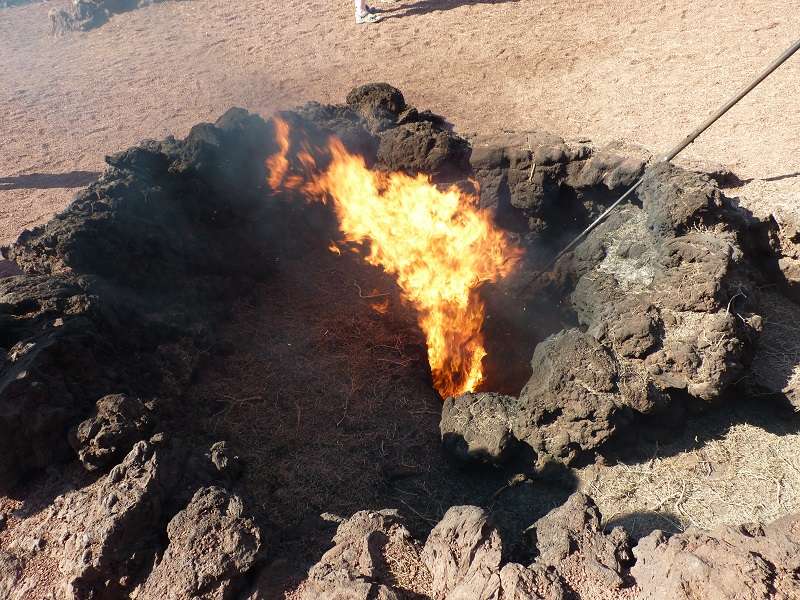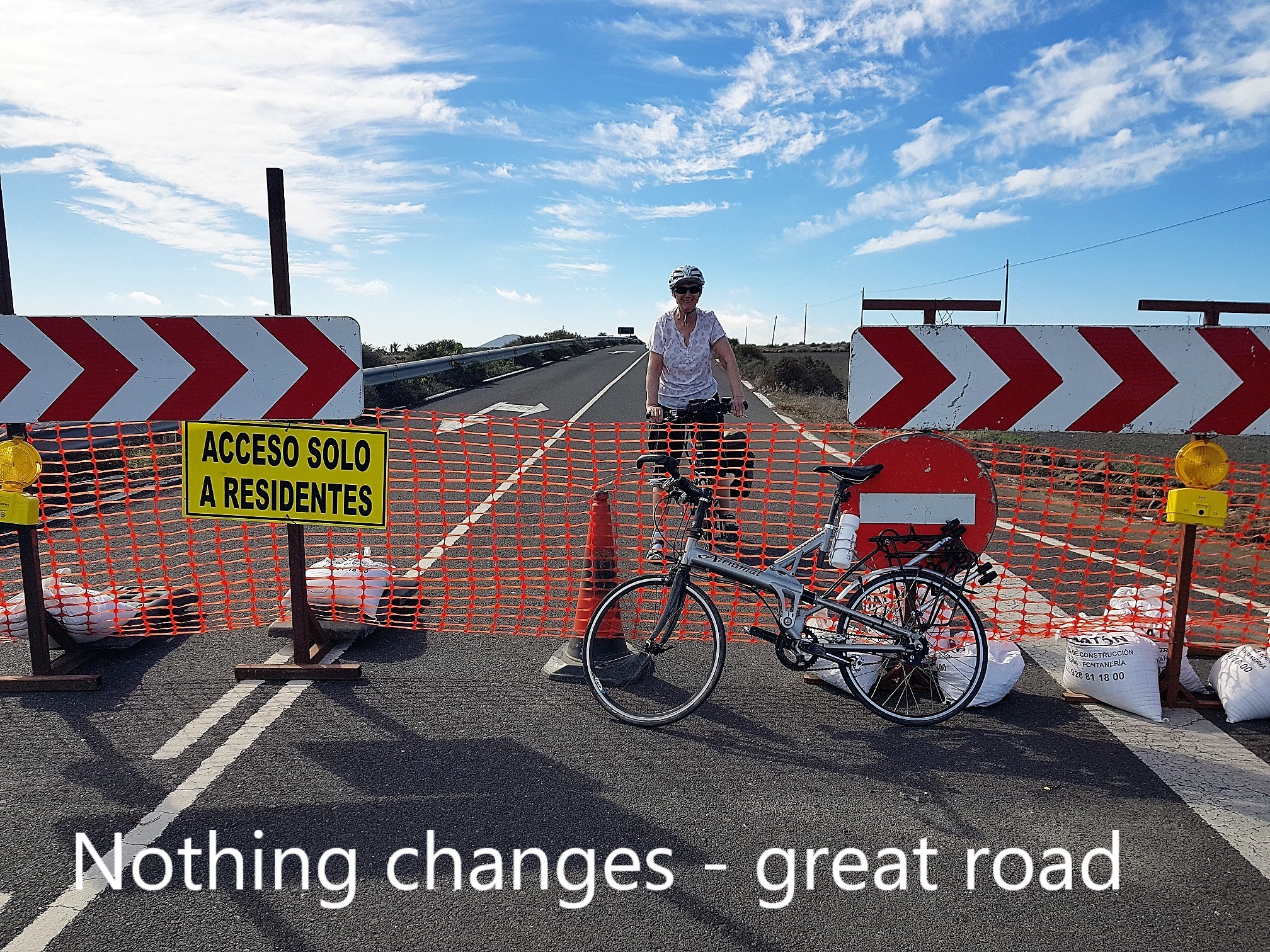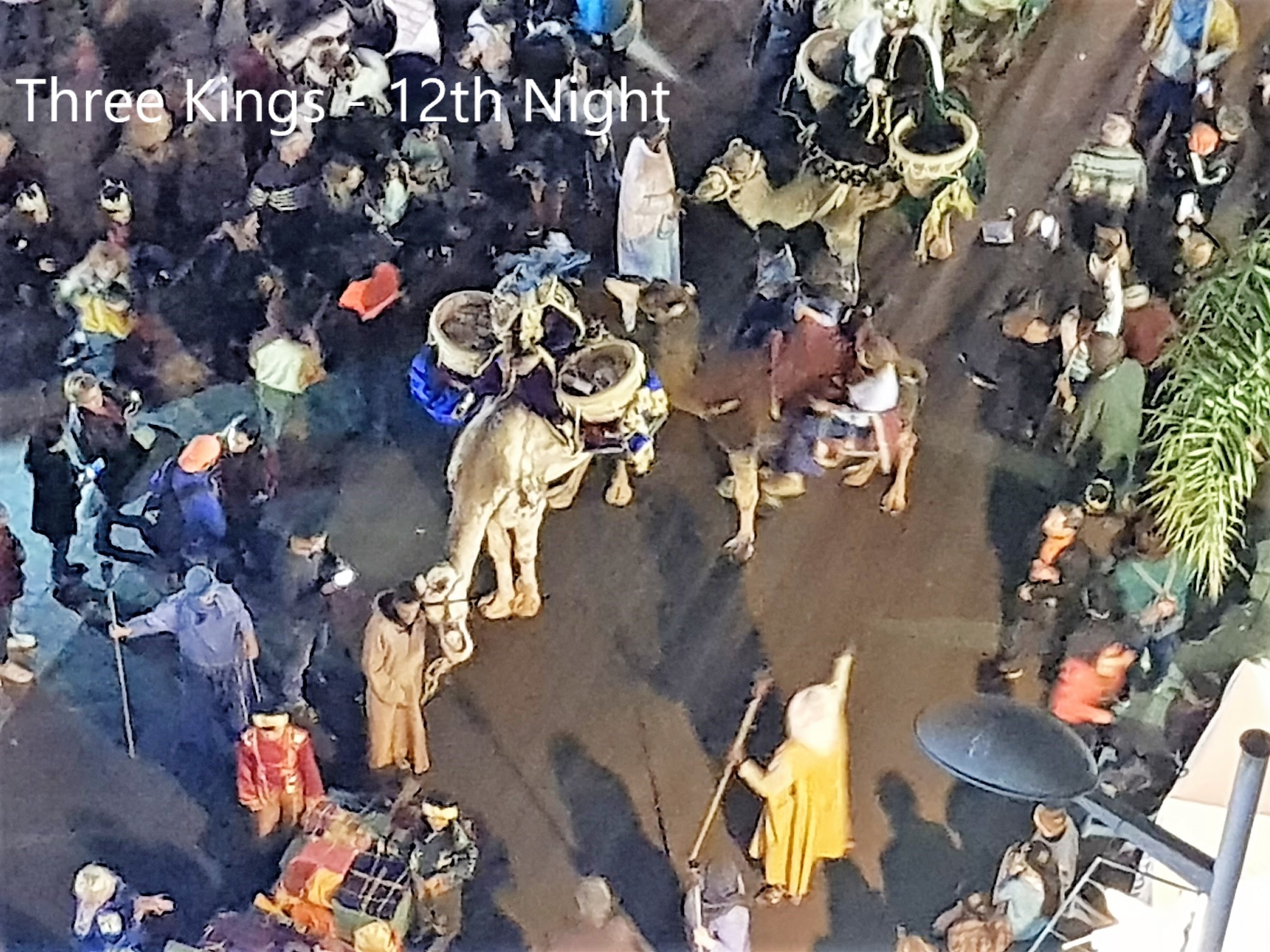 |
On the Why How and Downloads You can download the parts of the route we cycled. It needs to be unzipped and saved to a directory of your choice. You can then load it into the appropriate applications and GPS.
The Blog
Huelva to Arrecife
Getting there
Up before light even for the stoker. But even worse for the management as he needed to take her tea in bed. After all she had had a stressful day yesterday over the potholes. And this had only been slightly mitigated by a good Italian meal last night.
We started the ride to the port soon after 10am. So that is 9am Portuguese (and UK and Canarian) time and felt early. It was supposed to be 10km but ended up as 17 km. This was mainly because the management had no idea where the ship was going to be docked or that the Spanish would send us around the houses and oil tanks to reach it.
Once out of Huelva centre we cycled on the cycleway beside the estuary. It was very pleasant with smooth paths and ten or so long boardwalks over small inlets.
We then came to the main long bridge to the port area. Cycling and indeed walking across this is both legal, allowed and not particularly difficult. We cycled across on the wide four lane road. As experienced cyclists this was easy for us. If we were wimpish cyclists with ages to spare we could have taken the very narrow walkway behind the crash barriers.
We had laboured over this because both Garmin and Google got it wrong. It is impossible to use automatic cycle routing without taking a totally unnecessary detour of 30km. The management had to do the route manually and even then it would not do routing properly on the GPS. And all this because the internet giants have put a block on using the bridge by bike. Thanks to an earlier but obscure internet posting by a kind cyclist we assumed we could cross and the media giants were wrong.
 |
Leaving Huelva to the east is a contrast to coming in from the west. Huelva is a vibrant university city which we prefer hugely over the alternative port of Cadiz. But there is a downside. East of thetown the eye watering pollution reminded us of the oil fields in second world Cuba. The pollution is caused by industry and the oil refineries.
The law in Spanish ports bans cycling. The ships take bikes so they have to get around it somehow. At Huelva a member of staff escorted us onto the car deck and locked the bikes in a secure area.
We have seen all kinds of variations on this. These include trying to load our bikes onto vehicles and even cycling behind a car with a yellow flashing light. Once in Cadiz we were caught cycling by the port police and given a very serious warning and our passports scrutinised. This was all the more annoying as there was no safe pedestrian walkway. And this is in the country which produced Indurain. Perhaps it is the drugs which cause this odd behaviour. Who knows.
We were lucky with the 30 hour crossing. The sea was smooth and the weather fine. Our ship is run by Armas and is far superior to the lorry carrying rust bucket alternative which runs out of Cadiz.
Lanzarote
We arrived in Arrecife, the capital of Lanzarote, at siesta time. We checked into our city centre sea front apartment after a 30 minute cycle ride. We were surprised just how warm it was. We had arrived in a winter heat wave and for most of our stay temperatures reached 24 degrees in the afternoon.
We have spent several winters in Lanzarote, know it well, and it is our favourite Canary island. We chose to stay in Arrecife this time because it is slightly less touristy than the alternatives. It also has most of the amenities we expect of a largish town.
Cycling
We did some great rides in the warm sunshine. There is a surfaced cycle path going south along the prom for 15km and it also goes north for about 10km though it does use some joining roads.
On each ride we also did some serious climbs inland and visited several low level tourist places on the way. Much of the tourism here is to places designed by the local architect Manrique so are a bit better than the average tourist rubbish. And there is still some good Spanish food and culture in the inland villages.
From a cycling point of view Lanzarote is the best of the Canary Islands for us. It is certainly hilly but our average climb on rides is similar to Dorset. Most of the road surfaces are good. There are lots of cyclists, including pro teams and many amateur roadies.
Motorists generally are used to seeing cyclists on the road and are very considerate. Critical mass of cyclists has been reached here. The rare exceptions are usually motorists in hire cars, many of whom are probably, sad to say, British. Let's face it, in the UK, unlike in the rest of Europe, motorists can, and do, behave dangerously towards cyclists without fear of retribution. It is not surprising that some do the same in Lanzarote.
 |
Other things on Lanzarote
The management went walking. He seldom does, being a cyclist not a pedestrian. But the local walking group which we join when we are here had a hard walk in the mountains. The stoker does not do hard walks. She had also been to the local and very wealthy chiropodist. Her big toe was bandaged and not to be got dirty.
He set off on his bike for a very hilly early morning ride into the mountains. He met the other car borne walkers beside a small chapel on a country road. As he got ready two large groups of roadies whizzed by on buzzing wheels. Envy set in and for two pins the management would have been on the back. It was not a practical option on the Airnimal but he is definitely not a real walker yet.
The walk involved climbing one of the many volcanos, then walking around the top of the crater along a ridge. The return was a descent through the caldera in which bamboo had been planted and gone wild.
Even though we were not on the biggest mountain on the island the views were panoramic. From sea to sea, mountain to mountain and village to village. It is not easy to get this high, even on a mountain bike.
Most of the island was shaped by a massive volcanic eruption in 1730. Much of the centre and south of the island appears black. It is often more like a seascape than a landscape with storms frozen into the lava fields and craters. We love it.
The north of the island was not so affected by the 1730 eruption and is slightly greener and more rounded than other parts. The vegetation has had longer to become established, but most short term stayers would hardly notice the difference.
There is a downside for cyclists - the wind. Most days the north east trade winds blow at about 25 kph. It can sometimes blow harder and when there is no wind at all, which is rare. one notices that the drains smell.
We choose our routes carefully dependent upon the wind strength and direction. We almost never start out to go downwind. We always try to take advantage of any less usual wind direction to go to places not on our normal rides list. If the wind is very strong we stay local.
 |
General things
We have had a great ten day stay on Lanzarote. Good cycling of course but we have also had a chance to do chores and take it easy. We have enjoyed easy living in the sun. A carnival went past our balcony, the arrival of the Three Kings which signals the children getting Christmas presents on 12th night. The stoker found a chiropodist, we went to the cinema, and the management planned some more touring days after skiing.
As usual we have loved being on Lanzarote and will almost certainly return. It would be great to see Lanzarote become the first oil free tourist island in the world. They have almost constant winds and most days are sunny. It would be easy to achieve but is not even on the cards.
Lanzarote has suffered by being run by seriously corrupt politicians. The island would hugely benefit from being green just as it did in the last century by not allowing high rise buildings. Maybe had they had honest leaders green tourism would have happened and be to everyone's benefit. Shame.